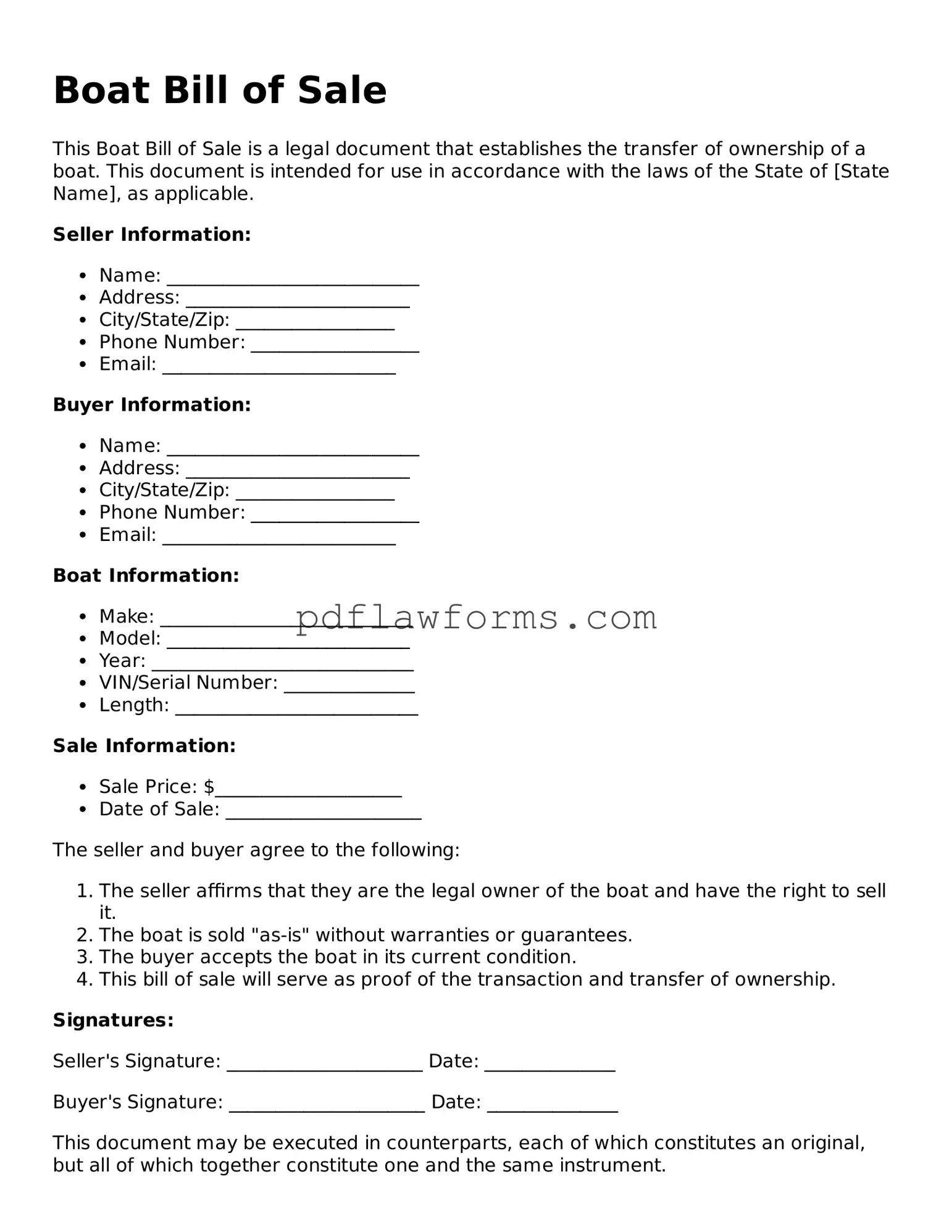When purchasing or selling a boat, having a clear and comprehensive Boat Bill of Sale form is essential. This document serves as a formal record of the transaction, detailing crucial information such as the buyer's and seller's names, the boat's make, model, year, and identification number, as well as the sale price. It not only protects both parties by outlining the terms of the sale but also facilitates the transfer of ownership. Additionally, this form may be required for registration purposes with state authorities, ensuring that all legalities are addressed. By including pertinent details such as the date of the sale and any warranties or conditions of the sale, the Boat Bill of Sale becomes a vital piece of documentation that can prevent disputes and provide clarity in the event of future inquiries. Overall, understanding the significance and components of this form can greatly enhance the experience of buying or selling a boat, making the process smoother and more secure for everyone involved.
